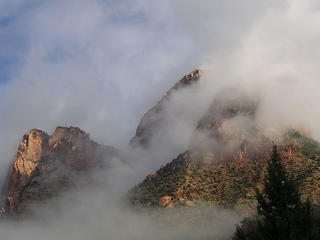Several tons of Strange Quarks hit earth
The Telegraph has a very interesting article about Strange Quark nuggets.
What are strange quark nuggets, or Strangelets?
Strangelets - sometimes also called strange-quark nuggets - are predicted to have many unusual properties, including a density about ten million million times greater than lead. Just a single pollen-size fragment is believed to weigh several tons.
They are thought to be extremely stable, travelling through the galaxy at speeds of about a million miles per hour. Until now, all attempts to detect them have failed. A team of American scientists believes, however, that it may have found the first hard evidence for the existence of strangelets, after scouring earthquake records for signs of their impact with Earth.
More:
The scientists looked for events producing two sharp signals, one as it entered Earth, the other as it emerged again. They found two such events, both in 1993. The first was on the morning of October 22. Seismometers in Turkey and Bolivia recorded a violent event in Antarctica that packed the punch of several thousand tons of TNT. The disturbance then ripped through Earth on a route that ended with it exiting through the floor of the Indian Ocean off Sri Lanka just 26 seconds later - implying a speed of 900,000 mph.
The second event took place on November 24, when sensors in Australia and Bolivia picked up an explosion starting in the Pacific south of the Pitcairn Islands and travelling through Earth to appear in Antarctica 19 seconds later.
According to the scientists, both events are consistent with an impact with strangelets at cosmic speeds. In a report about to be submitted to the Seismological Society of America, the team of geologists and physicists concludes: "The only explanation for such events of which we are aware is passage through the earth of ton-sized strange-quark nuggets."
But I have good news, and it isn’t related to my car insurance:
The good news is that, despite their force, the impact of strangelets on an inhabited area would, probably, be less violent than that of a meteor. Prof Herrin said: "It's very hard to determine what the effect would be. There would probably be a tiny crater but it would be virtually impossible to find anything."


0 Comments:
Post a Comment
<< Home